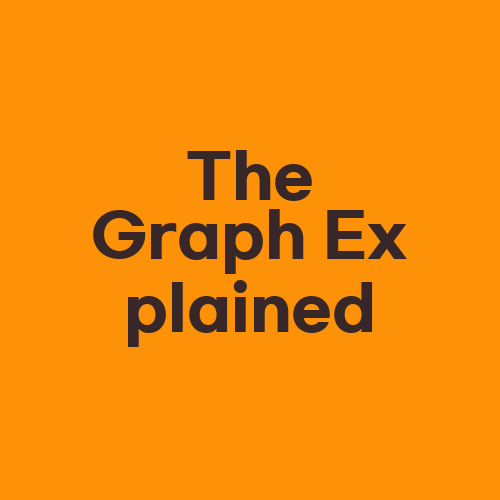The Graph Explained

The Graph Explained: Understanding The Revolutionary Data Indexing Protocol
Introduction
In today’s digital world, data is king, and access to accurate, reliable information is essential. The invention of blockchain technology has revolutionized the way we store and transfer data, but it still lacks efficiency and speed. This is where The Graph comes in – a decentralized indexing protocol that allows developers to build applications quickly and efficiently. But what is The Graph, and how does it work?
What is The Graph?
The Graph is an Ethereum-based protocol that enables developers to create APIs called subgraphs. These subgraphs can index and query data from multiple blockchains, creating an efficient and seamless experience for users. By using The Graph, developers can easily create dApps that interact with blockchain data. With The Graph, you no longer need to rely on centralized services to retrieve data from a blockchain. Instead, you can build and operate your data services.
The Importance of The Graph
The Graph has gained a lot of attention and support from the blockchain community due to its many benefits. First, it provides a decentralized solution for indexing and querying data. This means that developers no longer need to use centralized providers, which are often slow and costly, to access blockchain data. Second, The Graph is incredibly fast. It can index data in near real-time, making it an ideal solution for high-speed transactional data. Finally, The Graph is open-source, meaning that anyone can use and contribute to its development.
How Does The Graph Work?
The Graph uses a Query Processing Engine (QPE) to process and aggregate data from various blockchain networks. This consolidated data is then stored in a Graph Node, which enables developers to build subgraphs on top of this data. Subgraphs can comb through blockchain data faster than traditional indexing and query methods since they are optimized to query specific data types. They can also be customized for specific use cases, such as tracking supply chain data or monitoring financial transactions.
Building DApps With The Graph
Developers can use The Graph to create decentralized applications that require data from a blockchain. For example, they can build dApps for tracking transactions on the Ethereum network or monitoring smart contract events. These dApps can interact with The Graph’s subgraphs to retrieve the necessary data, providing users with a fast and reliable experience.
Frequently Asked Questions
What are the benefits of using The Graph?
Using The Graph has many advantages, including faster data indexing and querying, access to decentralized data indexing, and an open-source solution that is customizable.
Is The Graph only applicable to Ethereum-based blockchains?
No, The Graph is an indexing protocol that can be used on any blockchain network. However, it was initially designed for Ethereum because it is the most widely used blockchain for dApps.
How does The Graph ensure the security of my data?
The Graph is a decentralized protocol, which means that data is distributed across a network of nodes rather than being stored in a central location. This eliminates the risk of a single point of failure, making it less susceptible to security breaches.
Conclusion
The Graph is a revolutionary indexing protocol that enables developers to build decentralized applications that efficiently retrieve blockchain data. By using The Graph, developers can avoid using costly centralized data indexers and build customized subgraphs that suit their individual needs. As blockchain technology continues to play a significant role in the digital world, The Graph will become increasingly important for developers looking to create high-performance dApps that interact with blockchain data.
Useful sites:
– https://thegraph.com/
– https://docs.thegraph.com/
– https://medium.com/graphprotocol
– https://github.com/graphprotocol
– https://twitter.com/graphprotocol